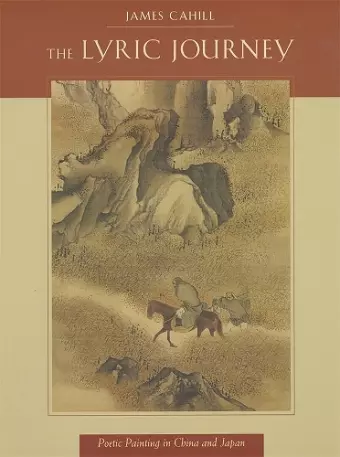The Lyric Journey
Poetic Painting in China and Japan
Format:Hardback
Publisher:Harvard University Press
Published:31st Aug '96
Currently unavailable, and unfortunately no date known when it will be back

This book explores the relationship between poetry and visual art in East Asia, focusing on the genre of poetic paintings. The Lyric Journey reveals its historical significance.
In The Lyric Journey, James Cahill explores the fascinating intersection of poetry and visual art in East Asian culture. This beautifully illustrated work delves into the tradition of poetic paintings, which emerged in response to lyrical poetry, creating a unique genre that has captivated audiences for centuries. Cahill examines three significant traditions of this art form, highlighting the profound connections between poetry and painting that have shaped the artistic landscape of China and Japan.
The journey begins in the eleventh century during the Northern Sung period in China, where the practice of creating paintings inspired by poetry first flourished. Cahill vividly recounts the artistic achievements of this era, particularly in the Southern Sung capital of Hangchou, a city renowned for its wealth and cultural vibrancy. He then shifts focus to the late Ming period, where artists in the prosperous city of Suchou revived this genre, further enriching its legacy.
Cahill also investigates the evolution of poetic painting in Edo-period Japan, particularly through the works of the Nanga masters and the celebrated painter-poet Yosa Buson. In all these contexts, the author illustrates how urban environments fostered a rich exchange between poetry and painting, emphasizing a shared ideal of returning to nature. This concept, referred to as the 'lyric journey,' serves as a key to understanding the emotional depth and beauty of these exquisite artworks, making The Lyric Journey an essential read for art enthusiasts and poetry lovers alike.
This generously illustrated book has all the appurtenances required by scholars, taking its place in the thousand year, Oriental tradition of study and debate about the meaning, style and social role of painting. Yet its agreeable prose, based on the author’s lectures, reflects his interest in reaching the general reader. That’s fortunate, since Cahill’s comparison of Japanese and Chinese painting holds plenty of lessons for Westerners unfamiliar with Asian arts. * The Times-Picayune *
[Cahill] disturbs common assumptions and establishes unexpected connections in painting history, directs attention to unjustly neglected works and raises numerous issues well worth debating. -- Tony Howes * China Review *
ISBN: 9780674539709
Dimensions: unknown
Weight: 1207g
276 pages